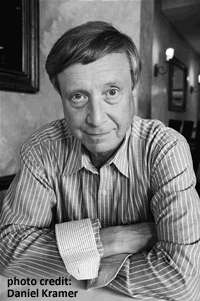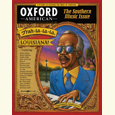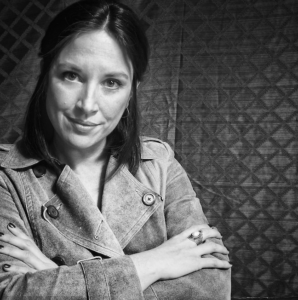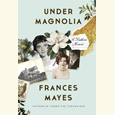An Original Take on an American Original
Prize-winning historian Sean Wilentz provides a fresh perspective on Bob Dylan
Few musical artists in the last century are as revered and reviled, discussed and dissected as Bob Dylan. With an eclectic career spanning fifty years, Dylan provides an astonishingly deep well of material for writers and critics to explore—and explore they have, though rarely to such critical acclaim as the work of Sean Wilentz has received. With The New York Times bestseller Bob Dylan in America, now out in paperback, Wilentz provides a unique series of takes on specific periods in Dylan’s life and work, including his time in Nashville.
Wilentz, a professor of history at Princeton University, is no stranger to readers of political history. In 2006, he won the Bancroft Prize for The Rise of American Democracy, and has written many other works of political and cultural history. Hardcore Dylan fans will recognize him for his role as historian-in-residence at Bob Dylan’s official website, as well as for his Grammy nomination for the liner notes to Bootleg Series, Vol. 6: Bob Dylan, Live 1964: The Concert at Philharmonic Hall. Wilentz is a talented writer and an artful storyteller. His insights into Dylan’s life and work, and his historically layered approach to them, tell us as much about American culture as they do the artist. With the paperback release of Bob Dylan in America, Chapter 16 caught up with Wilentz by email to talk about Dylan, his literary influences, and his work in Nashville.
Chapter 16: How did a Princeton historian known primarily as a writer of political history become interested in writing about Bob Dylan?
Wilentz: I’m not sure I agree with the premise that it’s odd for a writer of political history to be interested in writing about Bob Dylan. Music and politics have been entwined throughout American history, and that’s no less so with Dylan—even long after he ceased writing what many of his fans and his critics consider his “political” music.
 But I also have an unusual connection to the whole subject. My family ran a bookshop that was at the heart of the Greenwich Village literary and music scene in the 1950s and 1960s. I grew up amid all of that, my connection to Dylan’s work began there, and the connection is an unending source of inspiration, so rich was that time and that place. I try to weave the personal element through the book, though (I hope) without turning the book into a memoir. For in the end, I do write history—if I’m good at writing anything, I’m good at that—and I think it’s fair to say that the book’s basic approach is historical.
But I also have an unusual connection to the whole subject. My family ran a bookshop that was at the heart of the Greenwich Village literary and music scene in the 1950s and 1960s. I grew up amid all of that, my connection to Dylan’s work began there, and the connection is an unending source of inspiration, so rich was that time and that place. I try to weave the personal element through the book, though (I hope) without turning the book into a memoir. For in the end, I do write history—if I’m good at writing anything, I’m good at that—and I think it’s fair to say that the book’s basic approach is historical.
Chapter 16: People often connect Dylan with the radical folk music of Woody Guthrie, but many readers might be surprised by your assertion that composer Aaron Copland was also an important, though perhaps indirect, influence. Were you surprised yourself to discover the way Copland helped to set the stage for the emergence of Bob Dylan?
Wilentz: Yes, and they might be just as surprised to learn that Aaron Copland was a radical, too, who was part of the same leftist world populated by the likes of Charles Seeger, Pete Seeger’s father. Copland’s work has become so identified with Americana that it’s hard to remember it sprang from some of the same impulses as the Popular Front folk revival of the 1940s, which Guthrie and the younger Seeger exemplified and which influenced not just Dylan but all the folk enthusiasts of the 1960s.
I wanted to explore that Popular Front folk influence but didn’t want to rehearse yet again all the stories about Dylan and Guthrie. Without in any way minimizing Guthrie, I found what I wanted in Copland. I knew ahead of time that the Copland chapter would surprise and even baffle some readers, especially because it is the first chapter. And, as you say, there was little if any direct influence. But I wasn’t interested here in the usual kind of lineage—so-and-so begat so-and-so—which, though important, can also be simplified. I was more interested in affinities, in trying to capture part of the cultural mood of the Depression and World War II years that was an important backdrop to Dylan’s work. And the more I dug, the more interesting actual connections came to light, quite apart from the Seeger connection. If nothing else, though, I hope readers will come away knowing more about an important slice of American musical culture, whose influence on Dylan is plain—plain to me, anyway.
Chapter 16: You write about Dylan’s literary influences, as well, particularly the echo of William Blake in Blonde on Blonde. Would you mind giving an example of another of Dylan’s other literary influences and explain the way he incorporated that writer’s work into his own?
Wilentz: Rimbaud. When he first read Rimbaud’s line “Je est un autre,” Dylan says, the bells went off and it made perfect sense. About the time he recorded Another Side of Bob Dylan, two years before Blonde on Blonde, he was telling friends that Rimbaud was where it’s at. And I see those two albums as the beginning and end of a progression in Dylan’s work, built out of his own ‘60’s pop version of the long, immense, and rational derangement of the senses. Other strong literary influences, though, in almost all of Dylan’s work including Blonde on Blonde, would include Lenny Bruce and Lord Buckley. And on and on.
Chapter 16: You describe at length the sessions for Blonde on Blonde calling it a “convergence of New York hip and Nashville virtuosity.” Can you talk a bit about how the Nashville musicians and New York musicians worked together? Can you put a finger on what made the combination work?
 Wilentz: The basic arrangement was that Charlie McCoy, the great harmonica player, was something of the leader of the Nashville session men while Al Kooper was Dylan’s emissary to the Nashvillians. All overseen, of course, by the producer, Bob Johnston, though Johnston was known as a producer who just let his performers do what they wanted to do. Kooper and Dylan would work on a song in private; Kooper would convey it all to the musicians; and it would all come together in the studio. Not that it always came so quickly: there are scenes in the book of the musicians killing many hours while Dylan worked over his lyrics. But sometimes—as with “Visions of Johanna,” or the slew of songs cut on the late session date—it all came together with astonishing quickness.
Wilentz: The basic arrangement was that Charlie McCoy, the great harmonica player, was something of the leader of the Nashville session men while Al Kooper was Dylan’s emissary to the Nashvillians. All overseen, of course, by the producer, Bob Johnston, though Johnston was known as a producer who just let his performers do what they wanted to do. Kooper and Dylan would work on a song in private; Kooper would convey it all to the musicians; and it would all come together in the studio. Not that it always came so quickly: there are scenes in the book of the musicians killing many hours while Dylan worked over his lyrics. But sometimes—as with “Visions of Johanna,” or the slew of songs cut on the late session date—it all came together with astonishing quickness.
But that’s just the process. There was also the musical bonding. Someone I spoke with who was around the sessions—it may have been Charlie McCoy—recalled that some of the Nashville musicians knew Dylan as a good songwriter and nothing else. Dylan and the other hipsters, Al Kooper and Robbie Robertson, certainly knew about Nashville, but couldn’t have known too much about this particular group of sidemen (except McCoy, who contributed the Grady Martin-style Tex-Mex guitar runs on “Desolation Row”). So there was some “getting to know you” in the studio. The amazing thing is how quickly that passed, at least when it came to the music.
One thing to remember here is that the Nashville musicians could play just about anything and do it well. Another is that they were all so young—the New Yorkers and the Nashvillians. It wasn’t a matter of brash Greenwich Villagers colliding with a bunch of old country pickers. Kenny Buttrey, the drummer, had just turned twenty-one, or was just about to! I think that had a lot to do with it—the respect that comes with being young and knowing the music so well, which cuts through whatever cultural gaps there were. They’d all grown up listening to the same music, or a lot of the same music. Remember, too that Johnny Cash had already long been singing Dylan’s songs and praising him to the skies. Nashville and New York were like two different worlds in some ways (as Al Kooper recounts in Backstage Passes and Backstabbing Bastards), but that can be exaggerated. Plus, as Kooper suggests, the musicians showed their visitors the best kind of Southern hospitality.
Chapter 16: How do you think Blonde on Blonde changed the way listeners thought about Dylan as a performer and, more particularly, as a writer?
Wilentz: That’s hard to say. I mean, “Rainy Day Women #12 & 35” was the single off the album that people heard first, which was a very different musical experience than, say, “Sad Eyed Lady of the Lowlands.” I think the album led serious listeners to take him even more seriously. I recently re-read a piece from the time by the critic Paul Nelson, saying that Blonde on Blonde illuminated how “once one truly understands anything, there can no longer be anger, no longer be moralizing, but only humor and compassion, only pity.” More than forty years later, I wish I’d put it that clearly.





